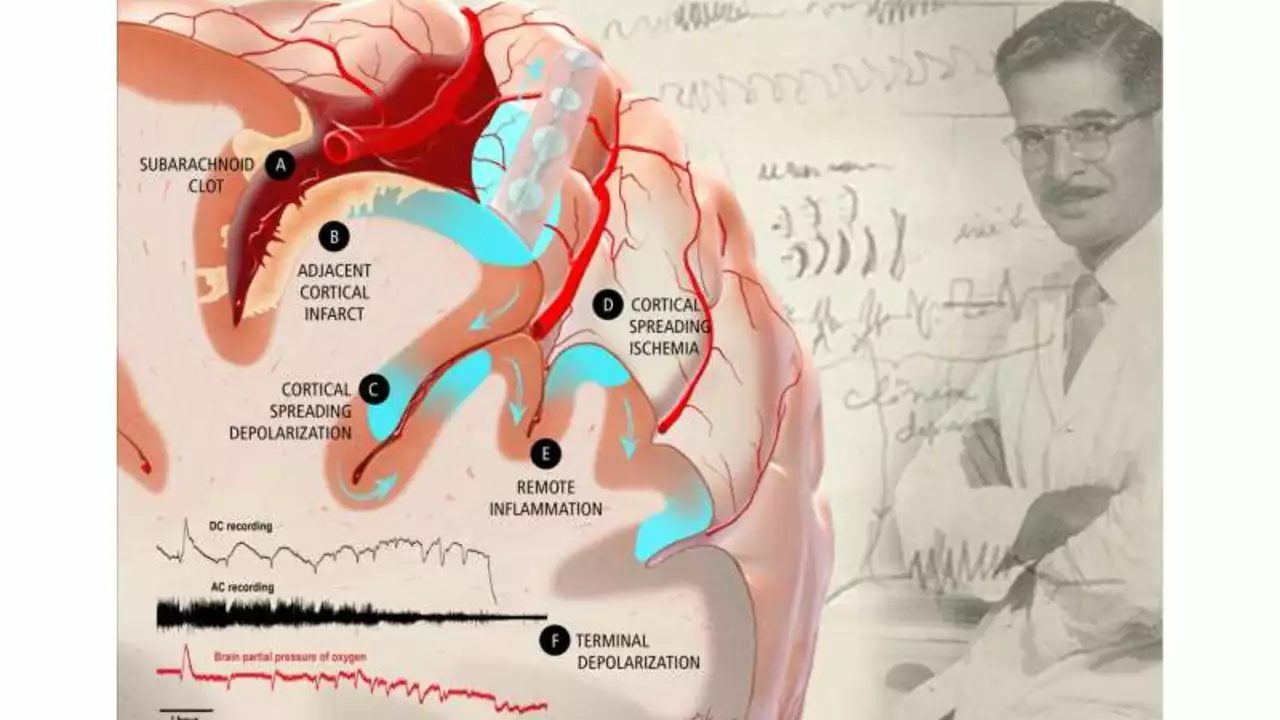
Understanding Subarachnoid Hemorrhage
Before we delve into the various assistive devices and technologies that can aid those suffering from subarachnoid hemorrhage (SAH), it's crucial to understand what this condition entails. Subarachnoid hemorrhage refers to a type of stroke that occurs when there's bleeding in the space surrounding the brain. This medical condition is severe and often life-threatening, leading to a sudden, intense headache, vomiting, and neck stiffness among other symptoms.
The Aftermath of a Subarachnoid Hemorrhage
Surviving a SAH can leave a person with significant physical and cognitive challenges. These can range from difficulties with movement and speech, to challenges with memory, concentration, and mood. It's also not uncommon for survivors to experience fatigue, sleep disorders, and changes in their ability to carry out day-to-day activities. Fortunately, there are various assistive devices and technology to help manage these challenges.
Physical Assistance Devices
Physical assistance devices can be crucial in helping survivors of SAH regain their mobility and independence. These devices can range from wheelchairs and walkers, to canes and mobility scooters. They can help those with physical disabilities due to SAH move around more easily and safely.
Custom Wheelchairs
Custom wheelchairs can be tailored to the specific needs of a SAH survivor. They can be adjusted for optimal comfort and support, and can include features such as tilt-in-space functionality, adjustable footrests, and specialized cushioning.
Speech and Communication Aids
Speech and communication can be significantly affected after a SAH. Assistive technology in this area can be a real game changer. From apps that convert text to speech, to more sophisticated augmentative and alternative communication (AAC) devices, these tools can help those who've lost their ability to speak communicate more effectively.
Augmentative and Alternative Communication Devices
Augmentative and Alternative Communication (AAC) devices can be particularly helpful for those with severe speech and language difficulties. These devices can generate speech, allowing individuals to communicate their needs, thoughts, and feelings more easily.
Cognitive Assistive Technology
Cognitive challenges are common after SAH, affecting areas like memory, attention, and problem-solving. Cognitive assistive technology can include a range of devices and software that can help manage these difficulties. These can be as simple as alarms and reminders, or as complex as specialized computer software that can help with planning and organizing tasks.
Smart Home Technology
Smart home technology can offer considerable support for those dealing with cognitive and physical challenges after a SAH. From voice-activated lights and appliances, to automatic medication dispensers and reminders, these devices can take care of routine tasks, freeing up mental and physical energy for recovery and rehabilitation.
Emotional Support and Online Communities
Lastly, it's important to remember that recovery from SAH isn't just about physical and cognitive rehabilitation. Emotional support is crucial, too. Online communities can provide a platform for survivors and their loved ones to share experiences, offer advice, and provide the much-needed emotional support during the recovery process.


Comments
Melissa Thompson
Let me be perfectly clear: if you're even considering using anything less than a NASA-grade tilt-in-space wheelchair with pressure-relieving, memory-foam hybrid cushioning-well, you're not just risking mobility, you're risking dignity. And don't even get me started on those cheap AAC apps-real communication requires proprietary, FDA-cleared hardware with biometric voice modulation. I've seen too many survivors settle for Android garbage when they could have had a $12,000 Tobii Dynavox with real-time neural mapping. This isn't a tech blog; it's a life-or-death checklist.
Rika Nokashi
While I appreciate the general overview provided, I must emphasize that the cultural context of assistive technology in developing nations is often overlooked. In rural India, for instance, where power outages are frequent and internet bandwidth is unreliable, reliance on high-tech smart home systems may be not only impractical but dangerously misleading. Many families rely on low-cost, locally fabricated mobility aids-bamboo crutches, hand-woven sling chairs, or even repurposed bicycle frames modified into walkers-devices that are not only affordable but deeply embedded in community knowledge systems. The Western obsession with proprietary software and branded devices often ignores the ingenuity of grassroots innovation. Perhaps the real breakthrough lies not in the most expensive gadget, but in the most adaptable solution.
Don Moore
This is an exceptionally well-structured and clinically accurate guide. The distinction between physical, cognitive, and communicative assistive technologies is both nuanced and necessary. I particularly commend the inclusion of smart home integration-recent studies from the Mayo Clinic show a 40% reduction in caregiver burnout when automated reminders and voice-controlled environments are implemented early in rehabilitation. For clinicians and families alike, this resource provides a roadmap that balances technological sophistication with functional realism. Thank you for taking the time to compile this.
Austin Levine
Smart home tech is a game-changer, but don’t forget simple stuff like voice-activated light switches. My cousin went from needing help to flip a switch to living alone after one $20 device. Sometimes the best tech is the one you don’t even notice.
Matthew King
bro i had a friend who got sah last year and the only thing that saved his sanity was a dumb alexa routine that yelled "time for meds" at 8am and played his favorite 90s rap album at noon. no fancy $10k gadget, just a $30 echo dot. also he still uses a walker he got from goodwill. sometimes the best tech is the one that doesn't try to sell you a subscription.
Andrea Swick
I think Austin and Matthew hit on something important-sometimes the most powerful tools are the simplest. But I also wonder if we’re overlooking the emotional weight of these devices. A custom wheelchair isn’t just a mobility aid; it becomes part of a person’s identity. The same goes for an AAC device that finally lets someone say ‘I love you’ to their grandchild without frustration. The tech matters, yes-but what matters more is how it restores agency, connection, and quiet moments of joy. I’ve seen survivors light up when their voice synth says their favorite word in their own accent. That’s not just innovation. That’s humanity.